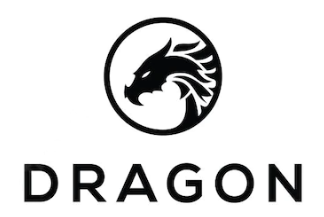Table of Contents
1. The Evolution of NFT Art and Its Impact on the Art Industry
Non-fungible tokens (NFTs) have revolutionized the art world, providing artists with new opportunities to monetize their work, reach global audiences, and establish their presence in the digital sphere. NFT art has experienced exponential growth over the past few years, transforming the way we consume, create, and value art.
NFTs enable artists to tokenize their digital creations, ensuring provable ownership, scarcity, and authenticity. As a result, NFT art has disrupted traditional art markets, democratized the art world, and expanded the definition of art itself.
2. Understanding the Technology Behind NFTs
NFTs are unique digital assets that use blockchain technology to verify ownership, provenance, and rarity. Each NFT is stored on a decentralized digital ledger, making it nearly impossible to forge, tamper with, or duplicate.
By leveraging the power of blockchain technology, NFTs address critical issues in the digital art world, such as piracy, plagiarism, and unauthorized reproduction. Furthermore, NFTs provide artists with a new level of control over their work, including royalties for secondary sales and the ability to create limited editions.
3. The Most Iconic NFT Art Collections and Artists
NFT art has given rise to a new generation of digital artists and iconic collections that have captured the imagination of collectors worldwide. Here are some of the most influential NFT art collections and artists:
- Beeple: Mike Winkelmann, known as Beeple, became a household name after his NFT artwork “Everydays: The First 5000 Days” sold for $69 million at Christie’s auction house. His visually stunning, thought-provoking digital art has set a new standard for NFT art.
- CryptoPunks: As one of the first NFT art projects on the Ethereum blockchain, CryptoPunks consists of 10,000 unique 8-bit characters, each with distinct traits and attributes. These pixelated avatars have inspired countless NFT art collections and have fetched millions of dollars at auction.
- Art Blocks: Art Blocks is an innovative platform that allows artists to create generative art through blockchain technology. By defining a set of rules or algorithms, artists can produce unique, on-demand NFTs that push the boundaries of digital art.
4. The Pros and Cons of NFT Art
As with any disruptive technology, NFT art presents both advantages and challenges. Here are some key pros and cons to consider:
Pros:
- Authenticity and Provenance: NFTs provide a transparent and secure way to verify the origin, ownership, and history of digital art.
- Artistic Empowerment: NFTs enable artists to reach global audiences, monetize their work, and retain control over their creations.
- Expanded Market Access: NFT art democratizes the art world, making it accessible to a wider range of collectors and enthusiasts, regardless of their location or financial status.
Cons:
- Environmental Concerns: The energy consumption associated with NFTs, particularly those on the Ethereum blockchain, has raised concerns about their environmental impact. However, new developments, such as the Ethereum 2.0 upgrade and alternative blockchain solutions, aim to reduce energy consumption.
- Market Volatility: The rapidly evolving nature of the NFT art market and its speculative aspects can make it challenging for artists and collectors to navigate and accurately assess the value of NFTs.
- Legal and Regulatory Uncertainty: The legal framework surrounding NFT art is still developing, which may lead to uncertainties in areas such as intellectual property, copyright, and taxation.
5. The Future of NFT Art: Trends and Predictions
As NFT art continues to evolve, several trends and predictions suggest further growth and innovation in the space:
- Interoperability and Cross-Chain Solutions: The development of cross-chain and interoperable platforms will enable artists and collectors to seamlessly interact with NFTs across various blockchains, enhancing the overall user experience.
- Collaborations with Traditional Art Institutions: As NFT art gains mainstream recognition, partnerships between digital artists and traditional art institutions, such as galleries and museums, will become more common, bridging the gap between the physical and digital art worlds.
- Integration with Virtual Reality (VR) and Augmented Reality (AR): The convergence of NFT art with immersive technologies, such as VR and AR, will create new opportunities for artists to showcase their work in innovative ways and offer unique experiences to collectors.
- Fractional Ownership and Decentralized Finance (DeFi) Integration: The intersection of NFT art with DeFi and fractional ownership models will provide new investment opportunities and financial products within the art market.
In conclusion
NFT art has undeniably transformed the art industry and created new opportunities for artists, collectors, and enthusiasts alike. As the space continues to evolve, we can expect further innovation, growth, and collaboration, solidifying NFT art’s position as a vital component of the global art landscape. Stay informed on the latest developments, trends, and breakthroughs in NFT art by following prominent artists, platforms, and industry experts. Together, let’s embrace the future of digital art and creativity.


